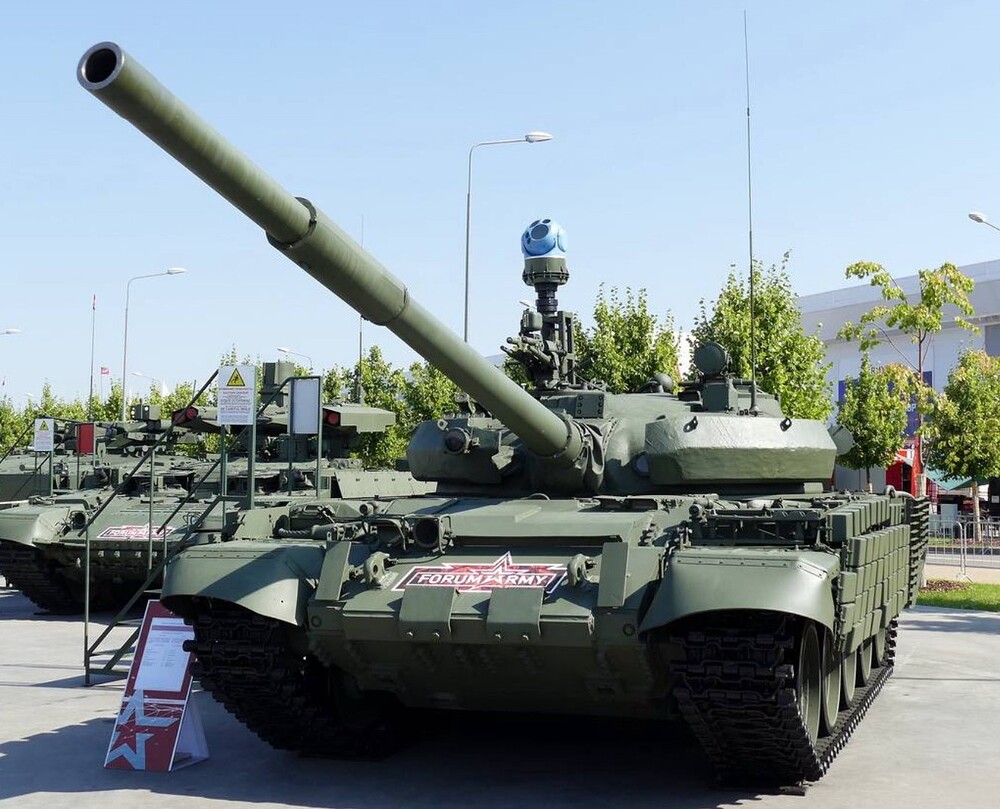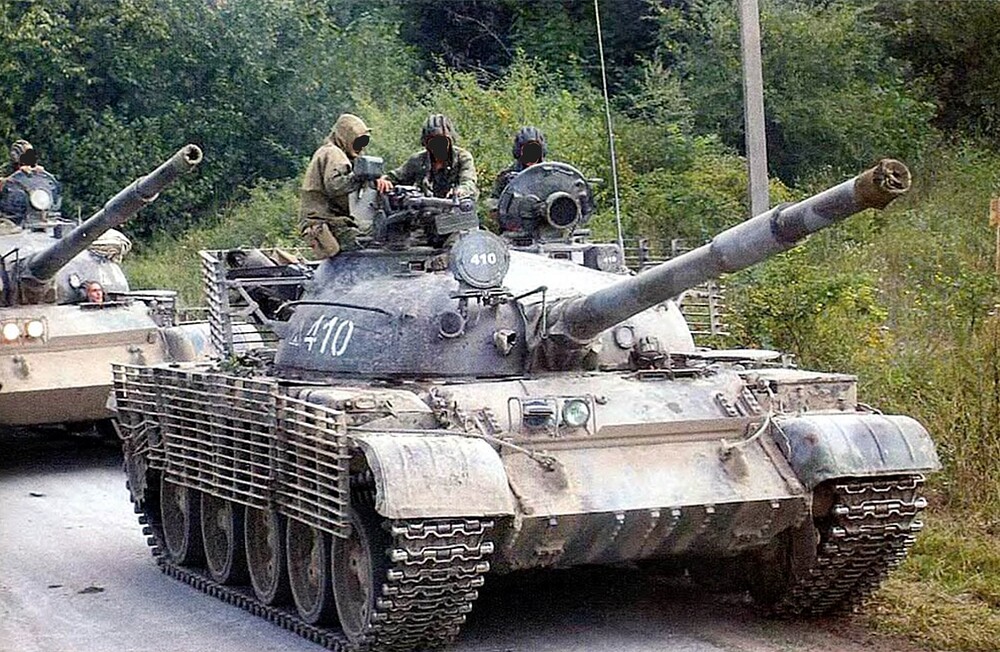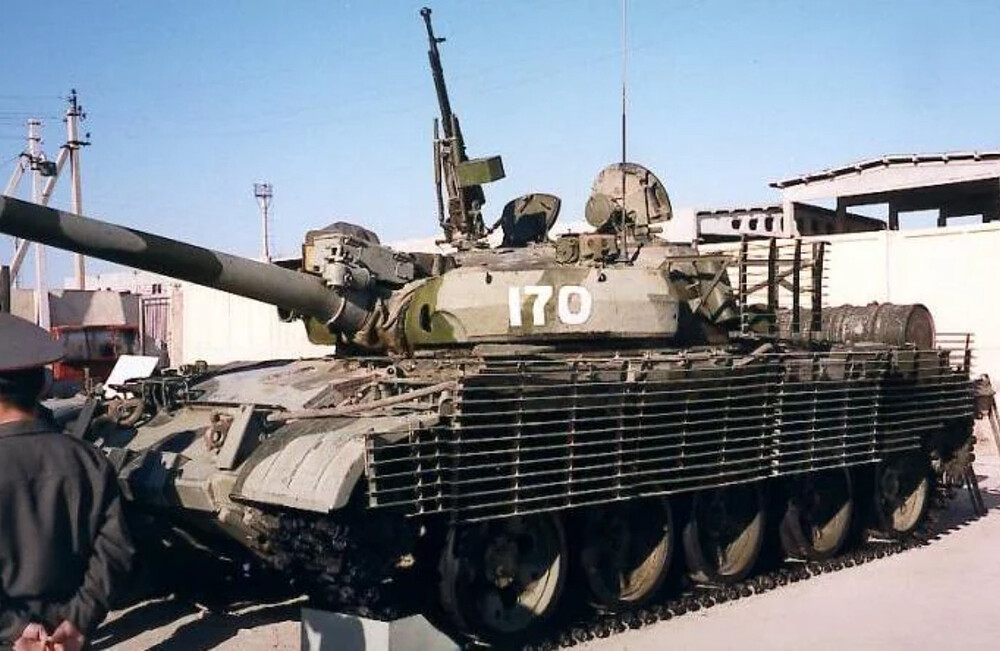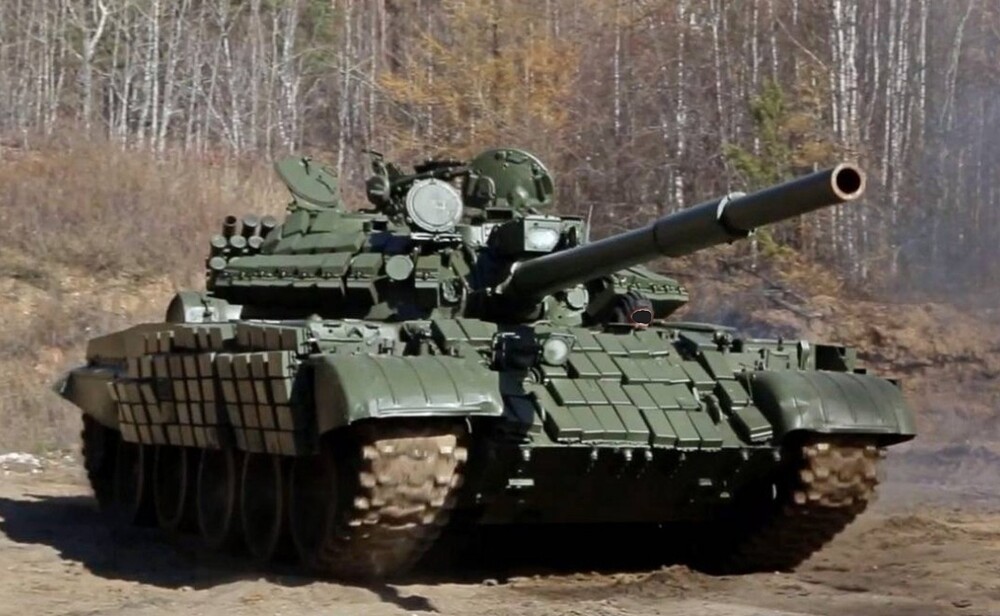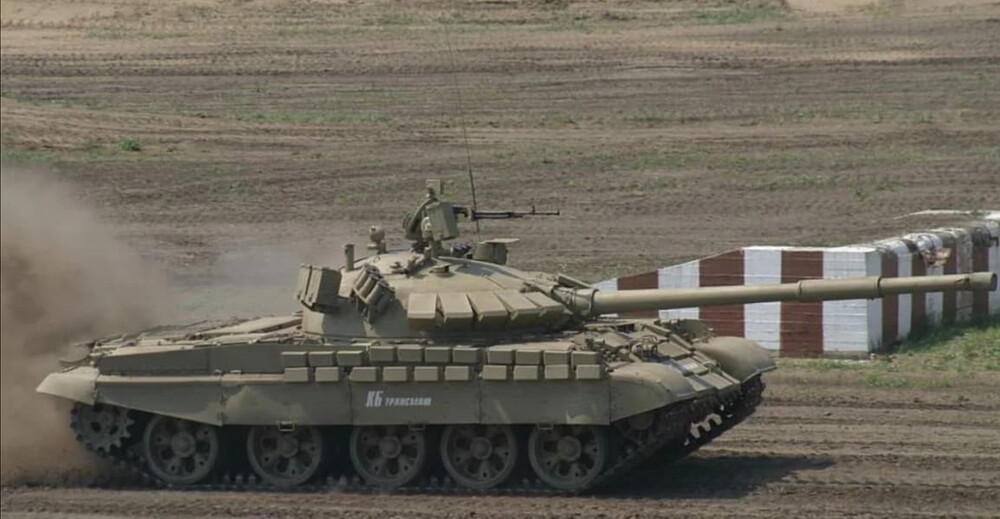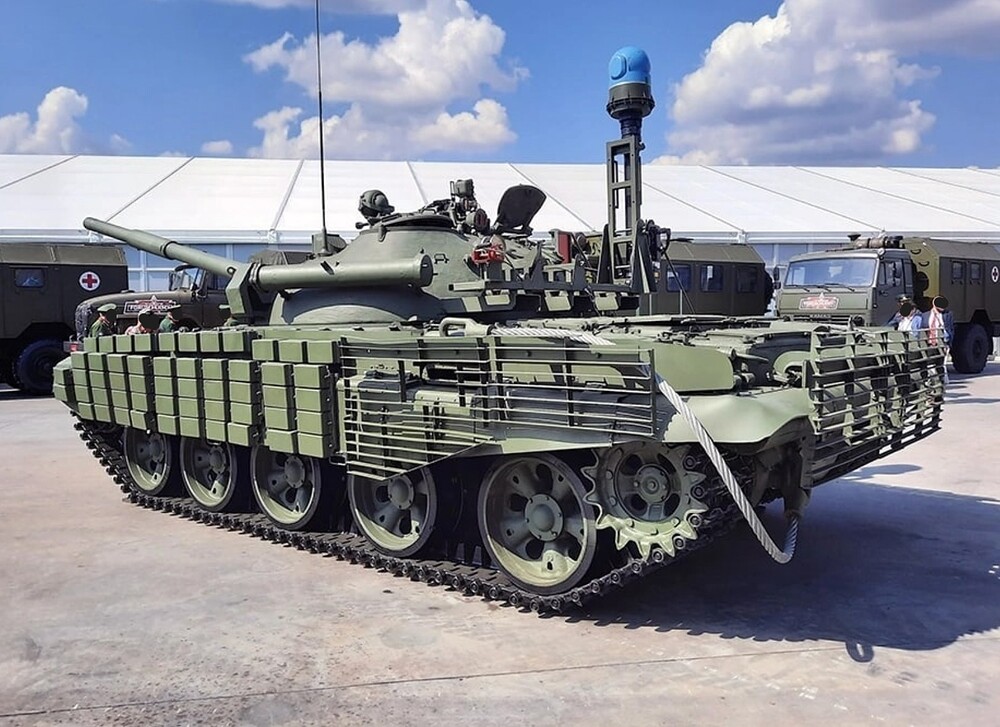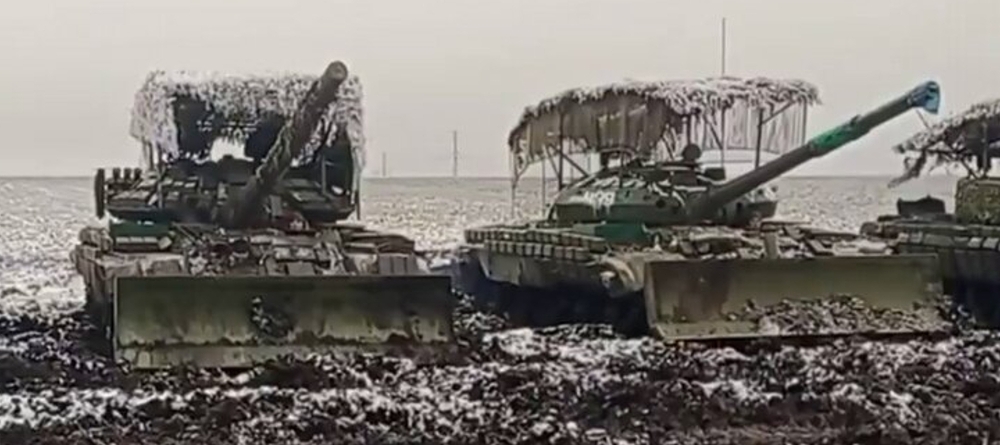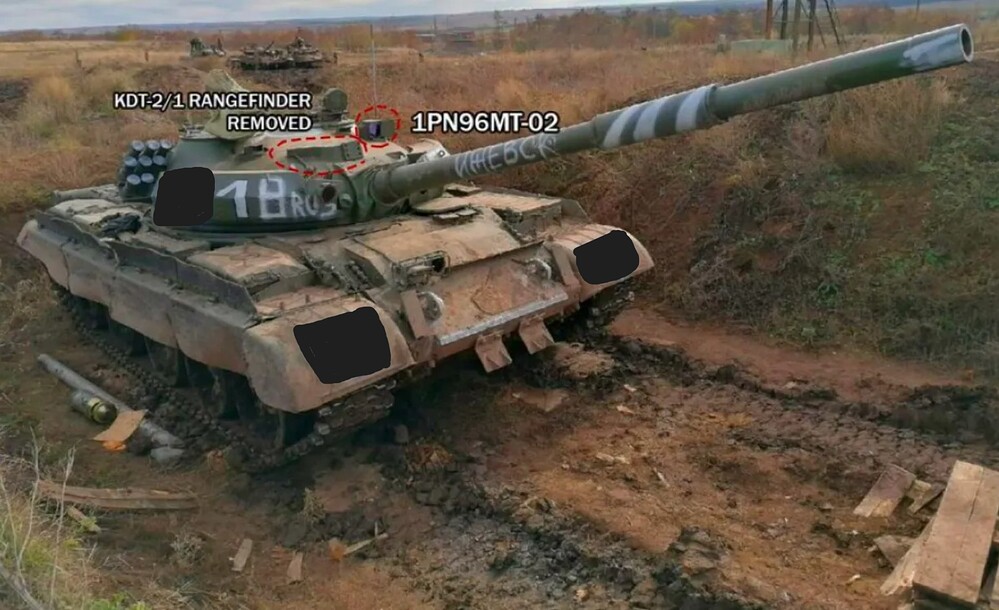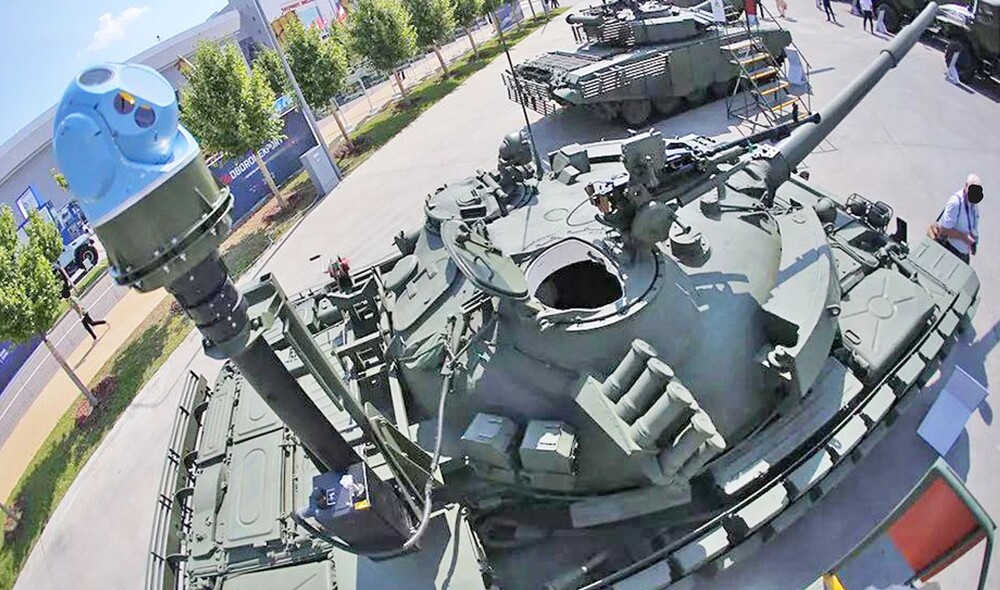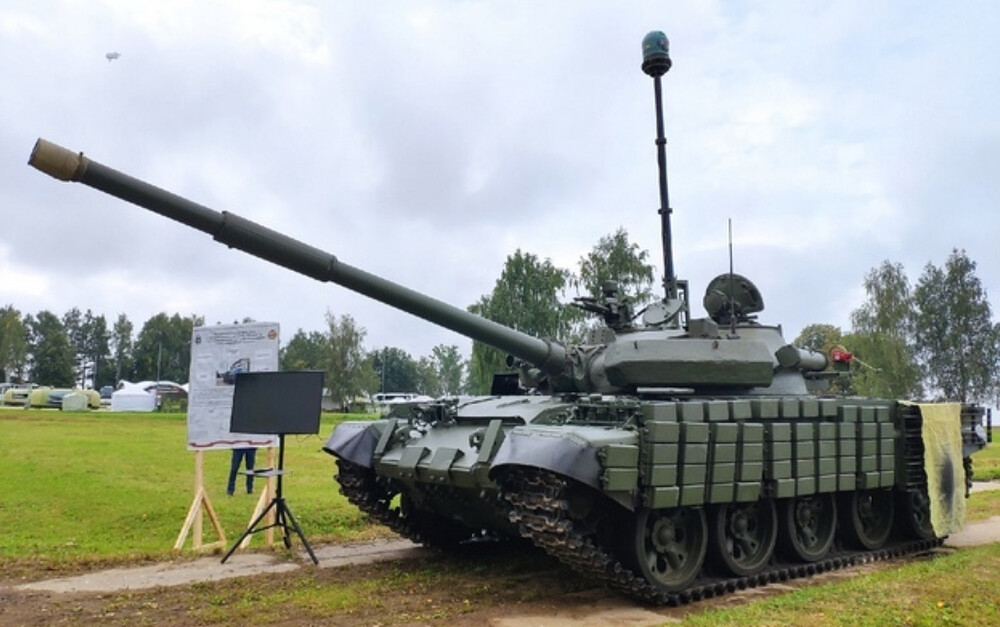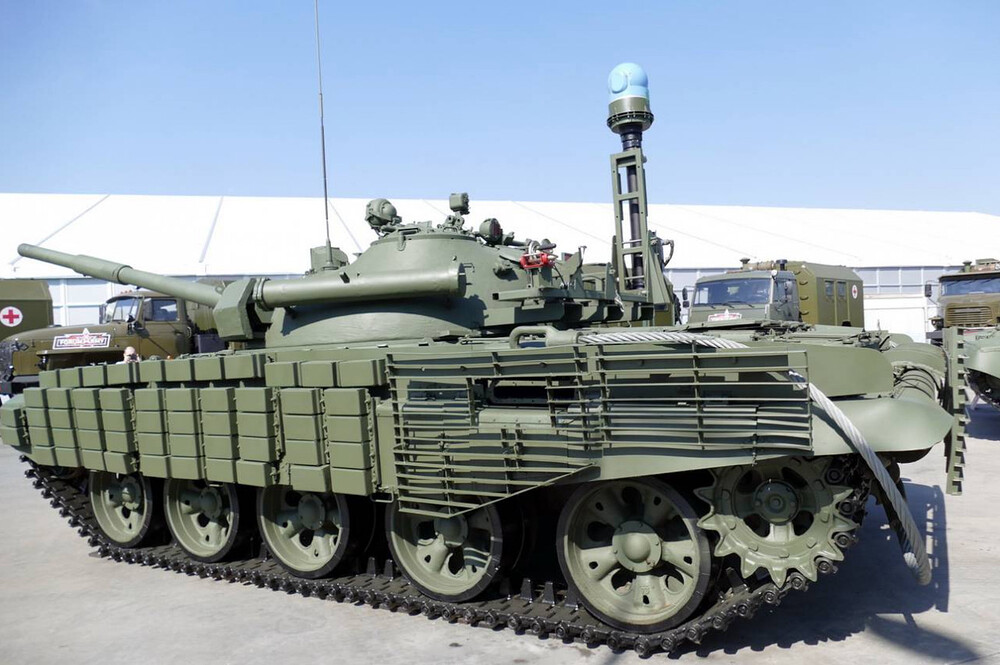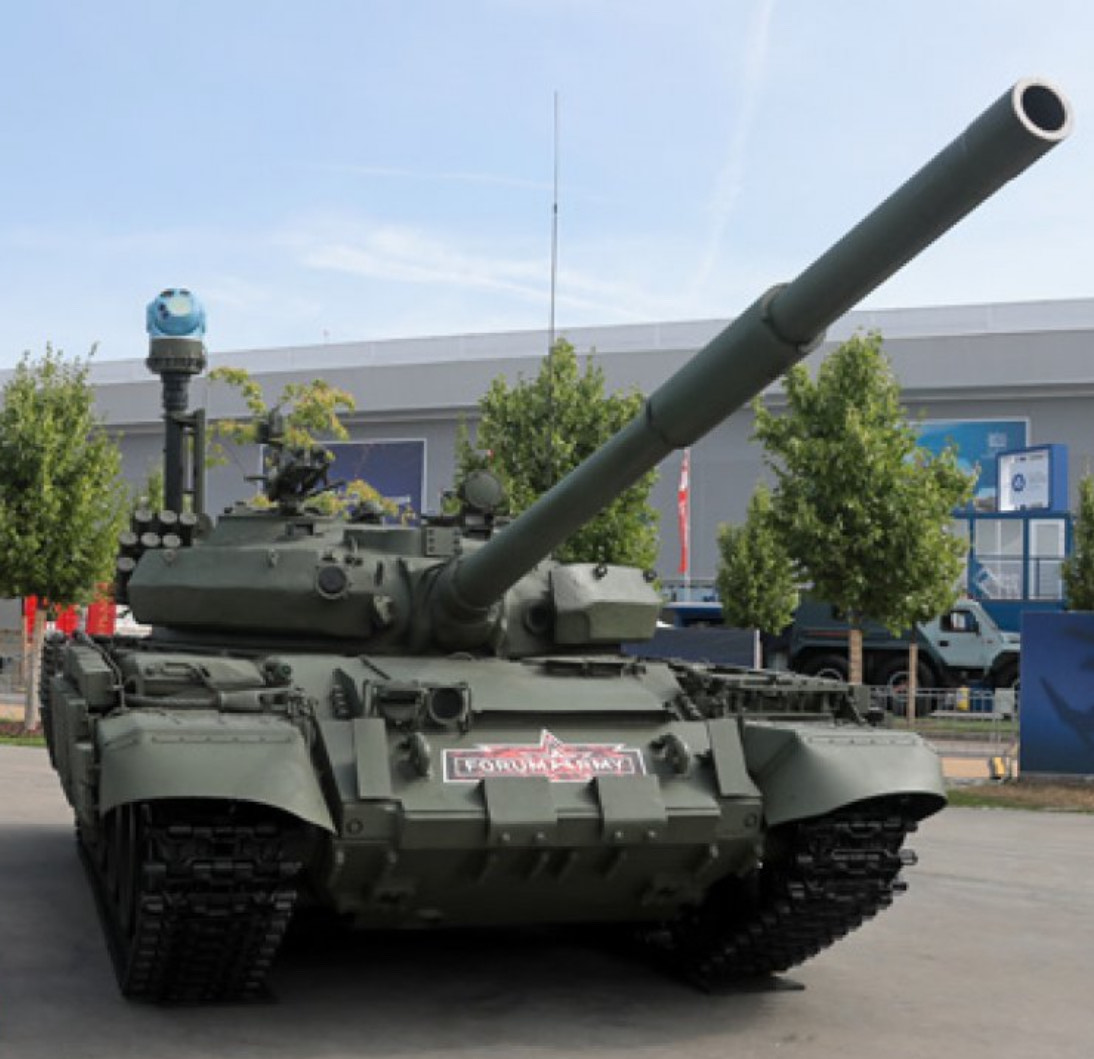Would you like to see this T-62 in-game?
- Yes, as a Tech-Tree Vehicle
- Yes, as a Premium Vehicle
- Yes, as a Squadron Vehicle
- Yes, as an Event Vehicle
- No, I don’t want to see this T-62 in-game.
0
voters
T-62M Obr. 2021
The T-62M Obr. 2021 represents Russia’s most recent and comprehensive pre-2022 upgrade of the T-62 platform, designed to extend the service life of this Cold War-era tank in modern warfare. The overhaul introduces improved hull side and rear protection, mediocre thermal imaging gun sight, a commander’s independent thermal viewer (CITV) with laser range finding capability mounted on an extending mast, and a 690 hp engine upgrade, all aimed at adapting the aging platform to the requirements of 21st-century warfare.
History of the T-62 and Its Modernizations
Spoiler
The T-62, introduced in the early 1960s, was the Soviet Union’s answer to emerging NATO armor threats, particularly the appearance of Western tanks with increasingly thick protection and powerful guns. It was the first mass-produced tank in the world to mount a smoothbore gun, the 115 mm U-5TS, allowing for significantly higher muzzle velocity and better armor penetration with fin-stabilized ammunition. While it represented a major leap in firepower over the T-55, the T-62 inherited a number of its predecessor’s mechanical features, and its armor protection, though improved, was quickly outpaced by developments in NATO munitions.
By the late 1970s and early 1980s, the growing threat of HEAT warheads and APFSDS rounds demanded an overhaul of older Soviet tanks. This led to the development of the T-62M, a modernization effort that aimed to extend the service life of the platform with improved protection, fire control, and mobility. One of the most distinctive features of the T-62M was its composite applique armor package, mounted on the front of the turret and upper glacis. The thick, multi-layered passive blocks on the turret were nicknamed “Brezhnev’s Eyebrows” due to their prominent appearance. These passive armor blocks provided an estimated frontal protection equivalent of roughly 400–450 mm RHAe against HEAT and about 300–350 mm RHAe against kinetic penetrators, depending on the impact angle.
The T-62M also received a laser rangefinder, upgraded optics, and, in some variants, the ability to fire the 9M117 Sheksna gun-launched ATGM. Its mobility was maintained by upgrading the engine to a V-55U, boosting output to 620 horsepower to help offset the added armor weight.
In parallel, the T-62MV variant was developed to provide enhanced protection specifically against shaped-charge threats, such as RPGs and guided missiles. Instead of passive composite armor, the MV introduced Kontakt-1 explosive reactive armor (ERA), which was installed on the turret, upper glacis, and side skirts. While Kontakt-1 was effective against single-charge HEAT warheads, offering up to 600 mm RHAe of protection where bricks were present, it provided little to no added protection against kinetic penetrators like APFSDS rounds. Nevertheless, for operations in environments saturated with man-portable AT weapons, the T-62MV’s ERA offered a significant survivability upgrade.
In comparing the two: the T-62M with Brezhnev’s Eyebrows offered better protection against APFSDS, while the T-62MV was more optimized for urban and asymmetric warfare, where HEAT threats were dominant. Both variants shared the same gun and general electronics suite, though their armor philosophies diverged based on the expected threat environment. Together, these modernization programs ensured that the T-62 family remained in service well into the late Cold War and even beyond, often filling secondary or support roles in Soviet and later Russian armored formations.
The first Russian 21st century modernized variant of the T-62M can be considered the Obr. 2005. It introduced significant improvements in optics and mobility, but its protection upgrades were clearly constrained, and the model saw no commercial success. More recent combat experience has since led to a series of far more pragmatic yet comprehensive upgrade packages. Contrary to popular belief, this suggestion’s particular “Obr. 2021” modernization was developed prior to the recent war and represents the last pre-war upgrade of the T-62M.
Armor and Protection
Spoiler
The T-62M Obr. 2021 is your basic T-62M, Brezhnev’s Eyebrows version, that received upgrades to its protection suite, aimed at improving survivability against primarily shaped-charge threats. Enhancements included the installation of Kontakt-1 ERA bricks on the rubberized side skirts, following the same layout seen on the T-62MV. To address vulnerable areas not covered by ERA, the flanks received a layer of slat armor, extending over the rear hull, rear hull sides, to provide added defense against HEAT weapons. Some recent T-62Ms have been fitted with relatively large dozer blades, which improve the tank’s frontal hull protection when installed. While it is not officially confirmed, the tank likely incorporates internal spall liners, a feature found in earlier upgrades like the T-55M5. Even in the absence of direct evidence, the combination of added composite armor and reactive elements would contribute to reducing the effects of internal fragmentation from near-penetrations.
However, the protection layout is not without compromises. Unlike more modern thoroughly upgraded variants, the upper glacis, turret cheeks, turret roof, and turret sides/rear remain largely uncovered by ERA and Slat, leaving critical areas exposed, particularly to top-attack or flanking threats. While the turret cheeks have proven adequate even in modern conflicts, the same cannot be said for the rest of the tank. Perhaps the most surprising omission is the lack of slat armor on the turret rear, a feature commonly seen on T-62s going back as far as the Soviet-Afghan War. Nevertheless, the overall armor configuration marks a notable improvement over earlier versions, especially in urban and close-combat environments, significantly enhancing the tank’s protection against HEAT munitions.
Some modern T-62Ms have been observed with dozer blades, which can significantly enhance frontal hull protection against shaped-charge munitions. Mounting the blade and its mechanisms, however, may require sacrificing ERA blocks or even the composite add-on on the upper glacis. That said, dozer blades are not new to the T-62 series and were already seen on T-62Ms during the Soviet–Afghan War.
Fire Control and Optics
Spoiler
The T-62M Obr. 2021 features a fully overhauled fire control suite. The outdated night vision sight was replaced with the 1PN96MT-02 thermal imager, offering passive infrared capability and a built-in laser rangefinder. This allows for accurate target acquisition and engagement in all lighting conditions. The integration of the 1PN96MT-02 thermal sight into modernized T-62M tanks has led to the removal of the earlier 1K13 sight, which was essential for guiding 9M117 “Sheksna” anti-tank guided missiles (ATGMs) through the 115 mm gun barrel. The 1PN96MT-02, while providing enhanced thermal imaging and a built-in laser rangefinder, lacks the capability to guide these gun-launched ATGMs. Consequently, T-62M variants equipped with the 1PN96MT-02 are no longer capable of firing ATGMs, marking a shift in their operational role towards conventional fire-support tasks.
In addition, a modern multi-channel optical-electronic system, mounted on an extending mast, provides thermal imaging, a daylight TV camera, and laser ranging capabilities for the commander. Combined with a digital fire control computer, this gives the tank far superior situational awareness, targeting and engagement efficiency compared to earlier variants, particularly in adverse weather or low-visibility environments. The thermal sight mounted on the mast is a particularly interesting and highly unusual feature among Russian tank modernizations. The sight can be raised or lowered using the mast, allowing the tank to remain completely concealed while still observing enemy positions. This feature may have been inspired by lessons from Syria, where tanks often engaged from behind sand berms and other forms of cover.
Armament and Ammunition
Spoiler
The main gun remains the classic 115 mm U-5TS (2A20) smoothbore, capable of firing a variety of ammunition types. These include traditional HE, HEAT, and several generations of APFSDS. The tank retains its PKT 7.62 mm coaxial machine gun and 12.7 mm DsHK/NSVT heavy machine gun on the turret roof. Ammunition capacity remains around 40 rounds for the main gun. However, The 1PN96MT-02 lacks the capability to guide gun-launched ATGMs, so the tank is no longer ATGM-capable.
By 2021, the most modern APFSDS round available for the 115 mm U-5TS smoothbore gun was the 3BM28, a depleted uranium fin-stabilized projectile developed in the late Cold War period. With a muzzle velocity of around 1,650 m/s, it could penetrate approximately 380 mm of RHA at 2,000 meters under ideal conditions. While still capable against older armored vehicles, the 3BM28 was increasingly outmatched by the composite and reactive armor of modern main battle tanks. Nevertheless, it remained the highest-performing kinetic round in service for upgraded T-62 variants like the T-62M Obr. 2021, preserving some anti-armor relevance in a support role.
Mobility
Spoiler
Just like the T-62M obr. 2005, the T-62M obr. 2021 can be fitted with a 690 hp engine, and some recently modernized vehicles reportedly have received this upgrade; however, in many cases the original 620 hp engine remains in use. The 690 hp engine is by far the most powerful ever installed on a T-62M. It would provide significantly improved acceleration and responsiveness; however, it is unclear whether it offered any gains in top speed, as that also depends on the transmission. Operational range remains roughly 550 km. The suspension system remains largely unchanged from the original T-62, though it is believed that some drivetrain components may have been strengthened or replaced with parts sourced from later Soviet-era tanks.
Conclusion
Spoiler
The T-62M Obr. 2021 demonstrates how far a legacy tank design can be pushed with targeted modernization. While it cannot compete directly with newer main battle tanks in terms of armor or firepower, its enhanced optics, protection and mobility make it viable in supporting roles. The tank features excellent optics even by modern standards; however, with the availability of adequate drone support, investing in a CITV is not cost-effective. This may explain why subsequent upgrades did not include it. Furthermore, the CITV may have relied on imported components subject to sanctions, or, if domestically produced, would still represent the most expensive element of a tank’s overhaul. Equipping such an upgrade on a support or ‘cannon fodder’ vehicle does not appear viable.
T-62M Obr. 2021 – Full Specifications
Spoiler
General
- Designation: T-62M Obr. 2021
- Origin: Russia (modernized version of the Soviet T-62)
- Role: Modernized Medium Tank / Fire Support Tank
- Year of Modernization: 2021
- Base Platform: T-62M
Crew
- Crew Members: 4 (commander, gunner, loader, driver)
Dimensions
- Length (gun forward): ~9.3 m
- Hull Length: ~6.63 m
- Width (with ERA/slat armor): ~3.5 m
- Height (top of thermal mast): ~2.45–2.6 m
- Combat Weight: Estimated 42–43.5 tonnes
Armament
- Main Gun: 115 mm U-5TS (2A20) smoothbore gun
- Rate of Fire: ~4–6 rounds per minute (manual loading)
- Ammunition Types: APFSDS, HE, HEAT
- Most Modern APFSDS: 3BM28 (DU core, ~380 mm RHA penetration at 2 km)
- Coaxial MG: 7.62 mm PKT
- Anti-Aircraft MG: DShKM heavy machine gun (turret roof)
Fire Control & Sighting
- Main Gunner’s Sight: 1PN96MT-02 thermal imager (with laser rangefinder)
- Commander’s Optics: Multi-channel mast-mounted thermal/day camera (shared view, not independently stabilized)
- FCS Computer: Digital ballistic computer
- Stabilization: 2-axis gun stabilization
- Rangefinding Method: Integrated laser rangefinder in both thermal sight
Protection
- Base Armor (estimates):
- Turret Front: ~220–242 mm cast steel
- Hull Front: ~100 mm RHA
- Composite Applique Armor: Turret Front and Hull Glacis
- Explosive Reactive Armor (ERA):
- Type: Kontakt-1
- Coverage: side skirts
- Effectiveness: Up to ~600 mm RHAe vs. HEAT in covered areas
- Slat Armor (cage): Added to engine compartment
- Spall Liners: Likely present, though unconfirmed
- NBC Protection: Yes (standard Soviet overpressure system)
- Smoke Launchers: Standard smoke dischargers
Mobility
- Engine: V-46-5M diesel engine (modernized)
- Power Output: 690 hp
- Transmission: Manual
- Top Speed (road): ~50-60 km/h
- Operational Range: ~500–550 km (on road)
- Suspension: Torsion bar
Communications & Electronics
- Radio: Upgraded VHF/UHF communications equipment
- Navigation: May include GPS-based system (unit-dependent)
- Fire Suppression: Automatic fire suppression system installed
Other Features
- Dozer Blade (some units): Installed for engineering and urban combat roles
